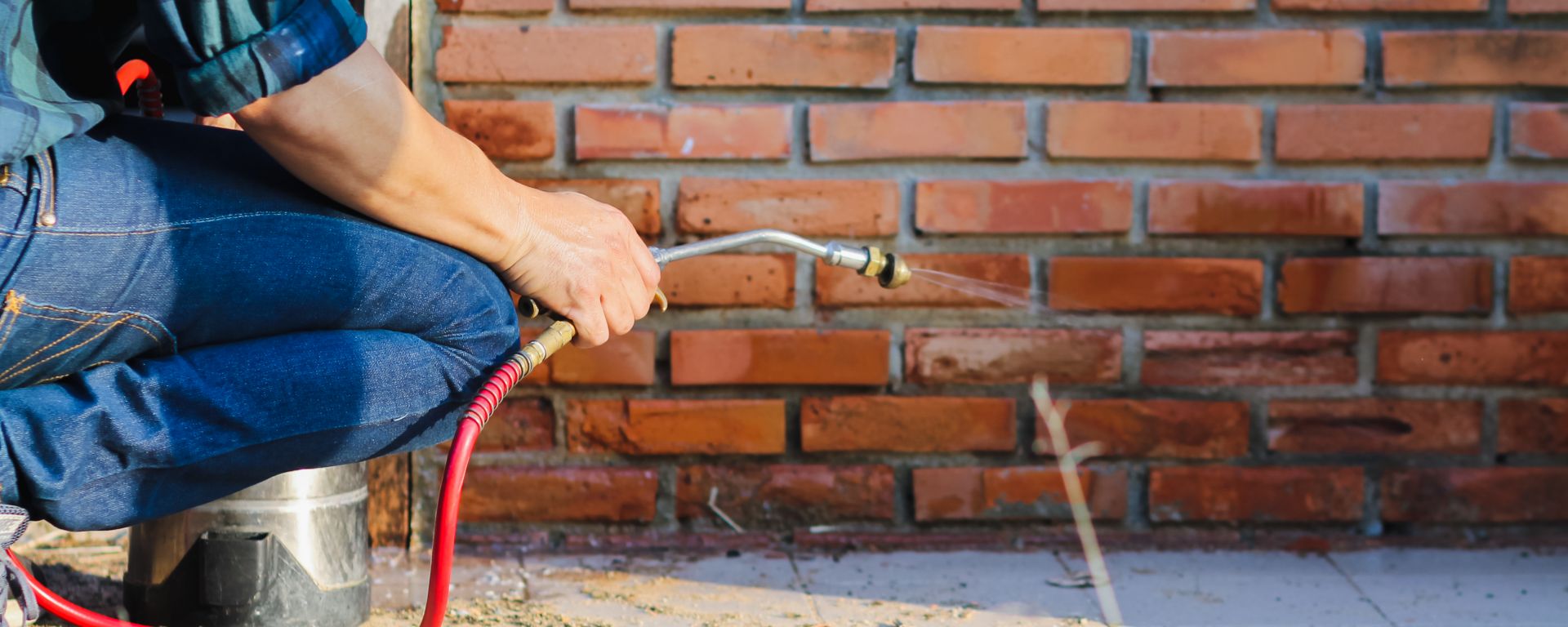Termites are often not the first that come to mind when we think of dangerous pests; we usually think of pests that would cause the most direct harm to us. However, some pests will cause much damage in other ways that will be costly – these are termites or white ants. Termites are incredibly hazardous to our homes as they are known to inflict costly amounts of structural damage. These pests work together in large groups and infest an area as they spawn nests for their habitat.
From their nests, they work their way into the wood of a home or building, searching for decay. Once found, they begin to feed, which leaves a path of destruction in their wake. The degeneration produced by termites can cost up to thousands of rands, and that’s on the lower end of the scale. With Spring fast approaching, if you are usually prone to termites in your area, there are ways to solve your termite issues before the holidays. This article aims to help you naturally get rid of termites in your home.
Natural Termite Control
Here is a step-by-step process of what you must do to get rid of termites naturally in your home:
- Detect the location of the termite mound: locate all of the termite hideouts so that you can get rid of most of them in one go. Otherwise, they will simply spread out to other areas.
- Protect your furniture: If your home is infested with termites or termites are taking over your garden, you should protect your furniture that hasn’t been affected by termites.
- Create a cardboard trap: soak and stack cardboard sheets in a corner to distract the termites from your valuable furniture. Cellulose attracts termites.
- Use beneficial nematodes: nematodes kill termites by releasing a certain type of bacteria into their bodies, hence why this is an effective killing method
- Sunlight: direct sunlight gets rid of termites. Place affected furniture in direct sunlight.
- Get rid of wooden mulch: mulch is a source of cellulose and is termite food. Try and use coconut husk mulch or another sort of substance that contains low amounts of cellulose if you notice termites in the garden.
Signs Of Termites
To be able to get rid of termites at home, you first need to determine their location. Different types of termites have different telltale signs, here are some of the most common types of termites.
Drywood Termites
These types of termites can usually be found in floorboards, timber, furniture, and anything wooden in your home. They are one of the most common types of termites that infest homes. They get water from the wood they feed on and build nests in the wood itself, they can live without ever making contact with soil.
Infestations begin to swarm, meaning termites start flying around your home, looking for a crevice to start their infestation, and then their wings drop off before they settle in the area.
Signs Of Drywood Termite Infestation
- Wings: notice if you have termites flying around lights, termite wings trapped in spider webs, wings on the window sill or the floor before infestation, or some years after an infestation while the queen produces a new swarm to spread out in your home.
- Frass: drywood termites often leave a lot of droppings in concentrated areas, since they live and eat in tight spaces. If you find heaps of droppings around or below dry wood, then you have a problem with these types of termites. The droppings are generally the size of pepper granules and may look like dust.
- Bubbles in paint: If you find paint around wood bubbling or peeling and a hollow sound when you tap it, it’s a sign of dry wood termites eating the wood from the inside.
Subterranean Termites
These are some of the most destructive types of termites; they form large colonies within the ground. They also build tunnels that connect from trees to support beams in your home. They quickly destroy sparse woods and houses.
Subterranean termites don’t build nests within the wood, but they do eat along the grain of the wood.
Signs Of Subterranean Termites
- Dirt: One of the best ways to be sure if you’ve been infested with termites of this type is by checking for signs of dirt in wood. There are usually traces of mud because their nests are in the ground. Only rarely are their nests built above ground if the conditions in the environment are right.
- Eating patterns: These termites eat along the grain of the wood and not against it. They eat the soft layers of wood and leave the harder parts which result in a layered pattern of damaged wood.
- Mud tubes: The termites build mud tubes that work as passageways between feeding.
What To Do
If you have noticed any of the signs indicating termites have infested your home and you need to find their location, here’s what you should do:
- Firstly, grab a stick or screwdriver and a torch.
- Start by going into your garage and basement and then begin tapping on any wood you can find in these areas.
- Tap on support beams, pillars, floor beams, wooden boxes, and furniture. If you can hear a hollow sort of sound, then you probably have termites.
- Look out for mud trails – termites will usually leave mud tubes and fallen wings behind. If you find any of these, then it’s a sure sign that you’ve got a termite infestation.
Set Up Traps
Termites are attracted to cellulose that’s found in wood paper and cardboard. If you want to prevent termites from getting into your home and furniture, you should create this distraction for them.
How To Set Up Cardboard Traps
- Get some cardboard and paper – about 5 sheets of cardboard should work.
- Then make them wet and stack them on top of each other.
- Once they’re soaked, place them by the areas where you found the most termites or signs.
- After a few days, you should notice that when you flip the cardboard over, it will be full of termites. Once you see this, take the cardboard outside and burn the cardboard with all of the termites.
This method is a solution for those that have the time on their hands to try it themselves. It won’t get rid of all the termites in your home, however, it will get rid of plenty and prevent more from getting into your furniture, closets, and home.
Use Nematodes
When it comes to getting rid of termites at home, it’s best to combine as many extermination methods as you can since you’ll want all of them gone, especially the queen.
- When you use beneficial nematodes, you won’t just get rid of termites but you’ll also be destroying other kinds of bugs that may be infesting or harming your home and garden, especially wood-boring insects. All you have to do is spray them into your yard, basement, and garage, and other rooms that may be infested.
- The nematodes kill termites by releasing a certain type of bacteria into their bodies; there’s a good chance that the entire colony will be affected. Nematodes are easy to apply and are not harmful to humans or pets.
- You can either buy beneficial nematodes online or at your local hardware store. When you spray, be sure to read the instructions carefully, each may have different coverage areas.
Try Boric Acid
Boric acid is another way to get rid of termites. It’s also an effective way to get rid of all sorts of bugs, including cockroaches and ants.
All you have to do is create a sort of paste using propylene glycol and apply it onto the furniture and wooden surfaces being infested by termites. Also, pour some into the termite mounds, this will kill all of them. Be sure to wear gloves when creating the mixture.
You could also sprinkle the boric powder all around the mounds in the ground and the edges of your home. This will further prevent bugs from entering your home. Keep an eye out for all entrances.
Another Way To Rid Your Home Of Termites
- As you know the first thing you need to do is identify the problem. Looking for damaged wood and listening out for hollow sounds or faint ticking sounds, is how you can tell where the colonies may be. Some infestations are obvious while others may not be. It is important to track down both. With the discovery, you are better prepared to deal with the problem.
- Remove moisture from the area. You can start sorting the problem out as soon as you have found the location of the termites. If there is an area that termites love to explore it’s those that are rich in moisture. Focus on making sure the inside of your home and the foundation outside are dry. This may be a vital element in termite eradication. Doing this gives these pests one less place to thrive in.
- Termites love water and hate warmth. When exposed to constant sunlight, termites have been known to simply die off due to the heat. This explains why colonies of termites often reside under plants, underground, or away from the sun. Getting rid of any cover takes away any kind of protection that they would have used while killing them naturally.
Carefully following these steps can positively help your household that is currently going through a termite crisis. However, there are times that the infestation is beyond natural methods and remedies. If the infestation has a real hold over your home and backyard, your best bet is to call a pest control company for the best treatment in pest control solutions. Once your house is termite-free, give the professional and trusted team at SweepSouth a call for an expert home cleaning service. For more cleaning tips and home guides, check out our blog today.








